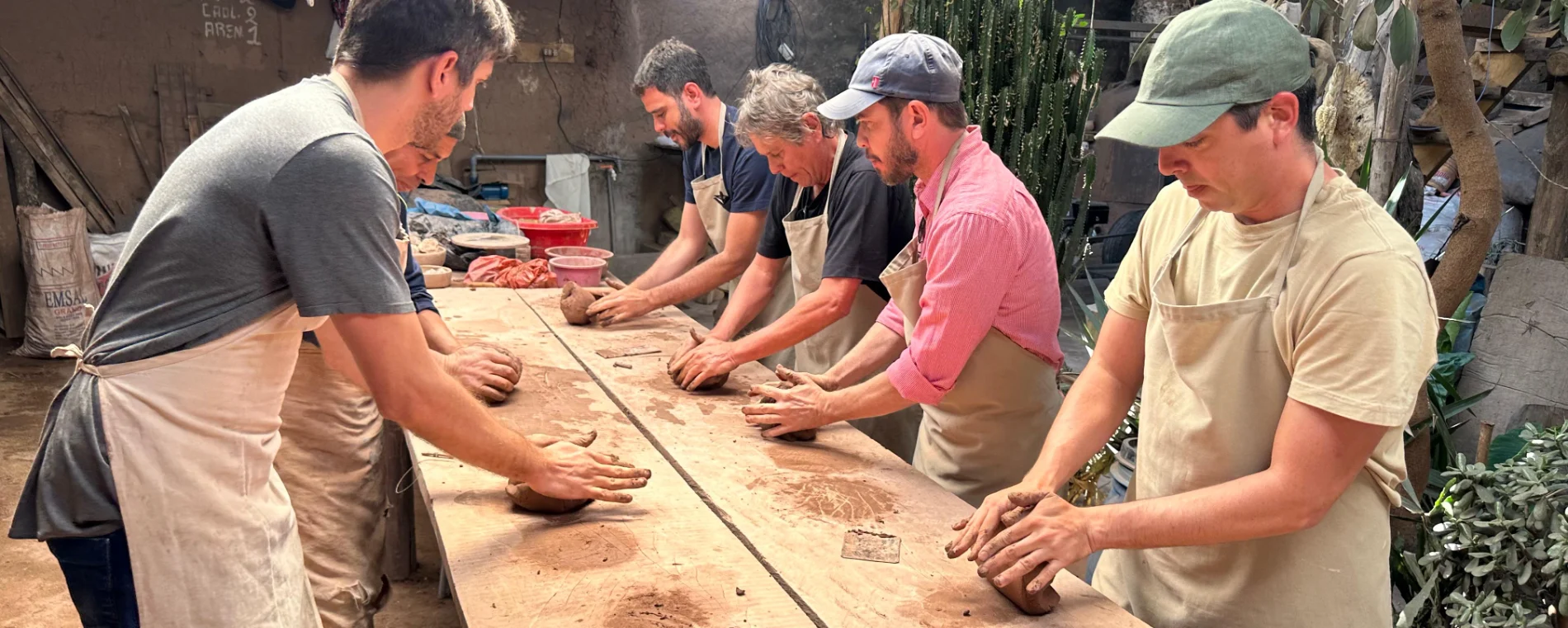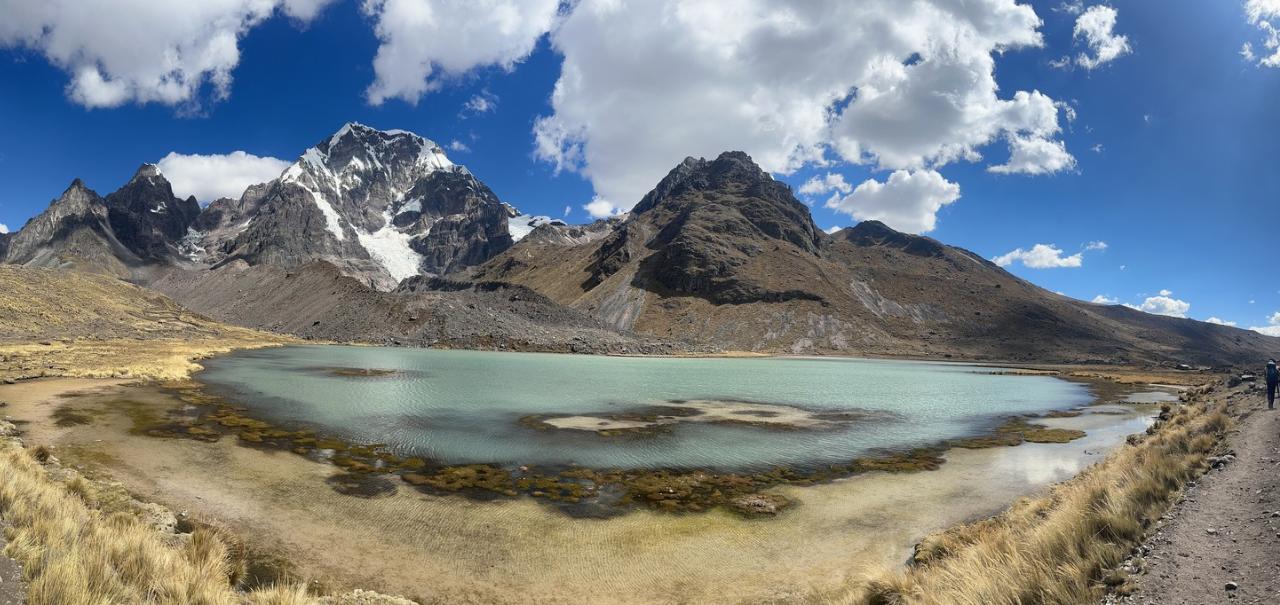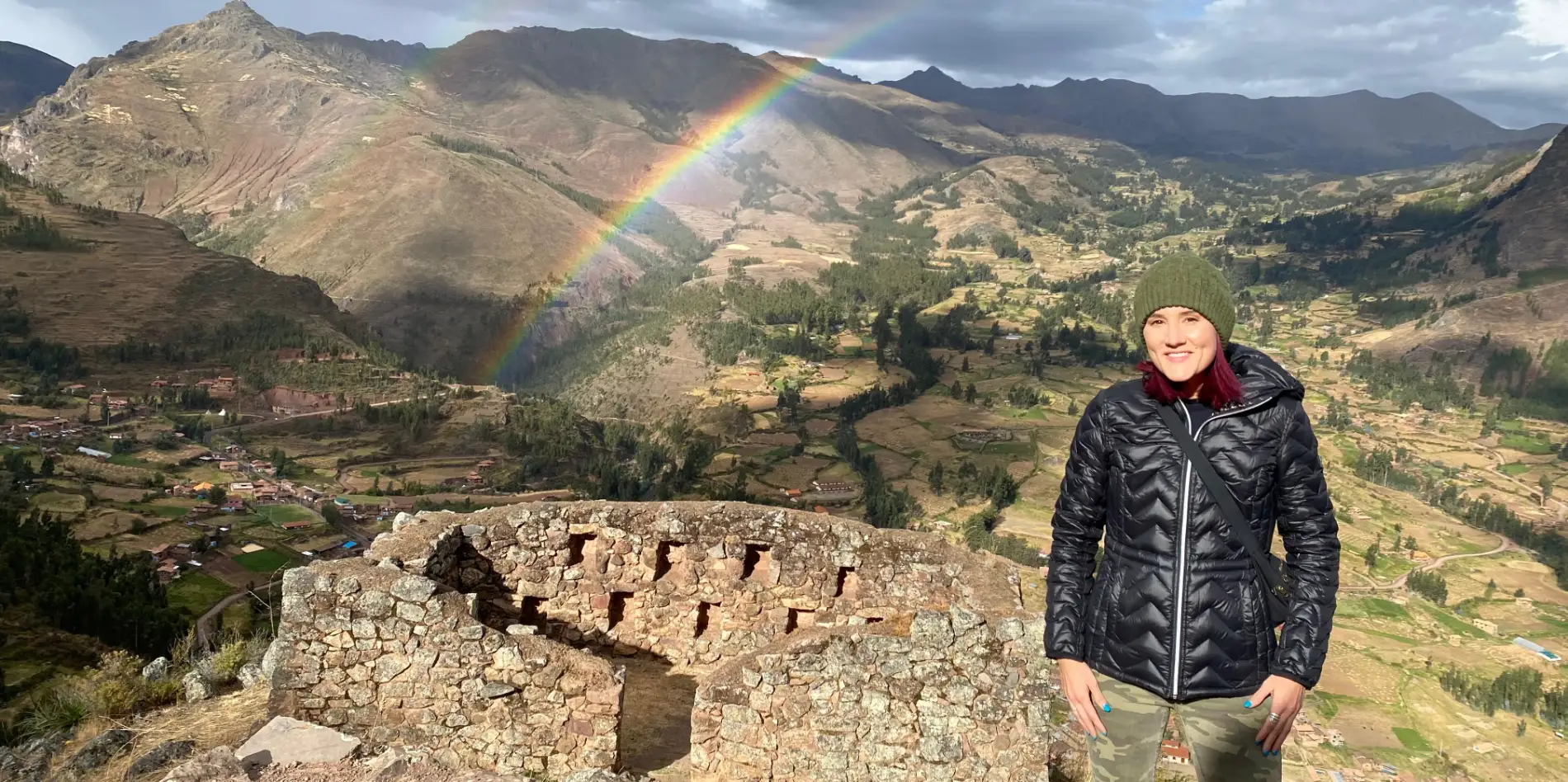Altitude in Peru is one of the first concerns for travelers dreaming of Cusco, the Sacred Valley, or Machu Picchu. The Andes are breathtaking – literally! However, with the right preparation and mindset, altitude doesn’t have to get in the way of your adventure.
Understanding Altitude in Peru
- Lima: 154 m / 505 ft (sea level – no altitude effects)
- Arequipa: 2,335 m / 7,661 ft
- Cusco: 3,399 m / 11,152 ft
- Sacred Valley (Urubamba, Pisac, Ollantaytambo): ~2,800–2,900 m / 9,200–9,500 ft
- Machu Picchu: 2,430 m / 7,972 ft
- Lake Humantay: 4,200 m / 13,779 ft
- Lake Titicaca (Puno): 3,812 m / 12,507 ft
- Rainbow Mountain: 5,200 m / 17,060 ft
Most visitors fly from Lima (sea level) straight to Cusco, where the thin mountain air can be a surprise. Therefore, many itineraries, including ours, begin with time in the Sacred Valley – it’s lower than Cusco and allows for a smoother adjustment.
Altitude in Peru: Common Symptoms
Not everyone experiences altitude sickness. For example, some may feel:
- Shortness of breath with mild exertion
- Headache
- Fatigue or trouble sleeping
- Nausea or loss of appetite
These symptoms are usually temporary and ease as your body adapts.
Tips to Acclimate Safely
These tips will help you adjust to altitude in Peru more smoothly:
Take it easy on arrival
In fact, rest on your first day in Cusco or the Sacred Valley. Gentle walks are fine, but avoid strenuous hikes immediately.
Hydrate often
Water is your best friend at altitude. Therefore, aim for small, frequent sips throughout the day.
Try coca tea or muña tea
Traditional Andean remedies that locals have used for centuries to ease discomfort.
Eat light, balanced meals
Your digestion slows down at higher altitudes. As a result, it’s best to choose soups, fruits, and vegetables over heavy meals.
Avoid alcohol the first 24–48 hours
It can dehydrate you and worsen symptoms. Instead, focus on hydration and light meals.
Sleep lower when possible
Spending the night in the Sacred Valley before Cusco can make a big difference.
Consider natural supplements
Options like chlorophyll drops, maca, ginkgo biloba, or even beetroot powder can help improve oxygen uptake and circulation. In addition, many travelers find these offer an extra boost when adjusting to higher elevations.
Consider medication
If you’re concerned, consult your doctor about acetazolamide (Diamox). In addition, ask about other preventative options before traveling. For official medical guidance, check the CDC’s advice on altitude sickness.
Our Approach at Perú Increíble
We design private Peru tours with altitude in mind. As a result, travelers can adjust comfortably while enjoying their trip. That means:
- Offering two acclimatization options: beginning in the Sacred Valley for a gentler introduction or arriving in Cusco and keeping the first day free of activities to allow the body to adjust
- Building in rest and light activity before tackling high-altitude hikes
- Having private vehicles on standby, so you can always adjust your pace
- Offering 24/7 support and local knowledge to keep you safe and comfortable
Final Thoughts
Altitude in Peru is real, but it doesn’t need to hold you back. Finally, remember that patience and preparation will help you enjoy every moment. After all, the Andes reward you with experiences unlike anywhere else in the world.
✨ Ready to explore Peru with peace of mind? Let us craft a private itinerary that balances comfort and adventure. Contact us today at info@peruincreible.com or follow us on Instagram and Tik Tok @peruincreible for more travel inspiration.




